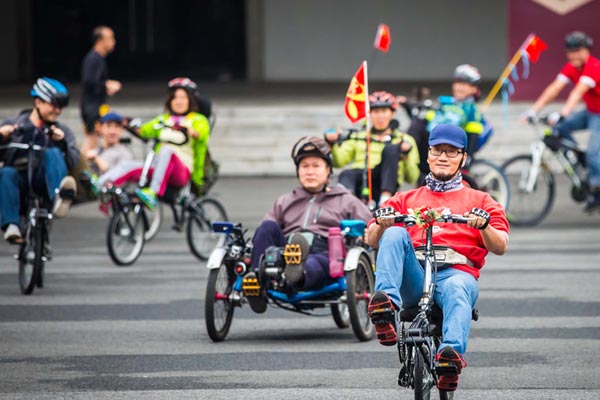China grips technology to brake world fastest train
BEIJING -- China has mastered braking technology to stop the world's fastest trains that travel a maximum speed of 500 kilometers per hour, a railway scientist said on Thursday.
The eddy-current braking testing system has been completed and put into use, Li Heping, a senior researcher of China Academy of Railway Sciences, told Xinhua News Agency in an exclusive interview.
Eddy-current braking, a high-end technology for rail transportation, is used in high-speed trains traveling at 200 km.p.h. or above. The technology is under development in countries that have high-speed railways.
Chinese researchers can make dynamic simulation to brake high-speed trains at a maximum speed of 500 km.p.h., and launch testing research of eddy-current braking in all speeds and situations, he said.
Li noted that China is internationally advanced in overall technologies of high-speed trains.
"Chinese high-speed railways are safe. I, as a researcher, travel by high-speed trains whenever possible. I hope fellow countrymen have confidence in the safety of China's high-speed trains," said Li.
The country's first high-speed railway, linking the Chinese capital Beijing and the neighboring port city Tianjin, was inaugurated on August 1, 2008, with trains traveling at a speed that could reach 350 km per hour.
In December last year, the high-speed line linking Beijing and Guangzhou -- the world's longest -- went into service, bringing China's total high-speed rail network in operation to a length of more than 9,300 km.
China plans to have 18,000 km of high-speed lines in operation by 2015.
Tests show China's new-generation high-speed trains can run as fast as 486.1 km.p.h., a record high in the world.
Li also disclosed China will put dual-powered high-speed trains into operation next year, with self-owned intellectual properties. The trains, driven by electric force and cells, will mainly be used for inter-city routes traveling 200-250 km.p.h., leaving no emissions.
Dual-powered trains are fueled with cells in areas without electric traction.
"The technology will fill the technology gap in the world and mark a major breakthrough in the research of high-speed train dynamics," said Li.























